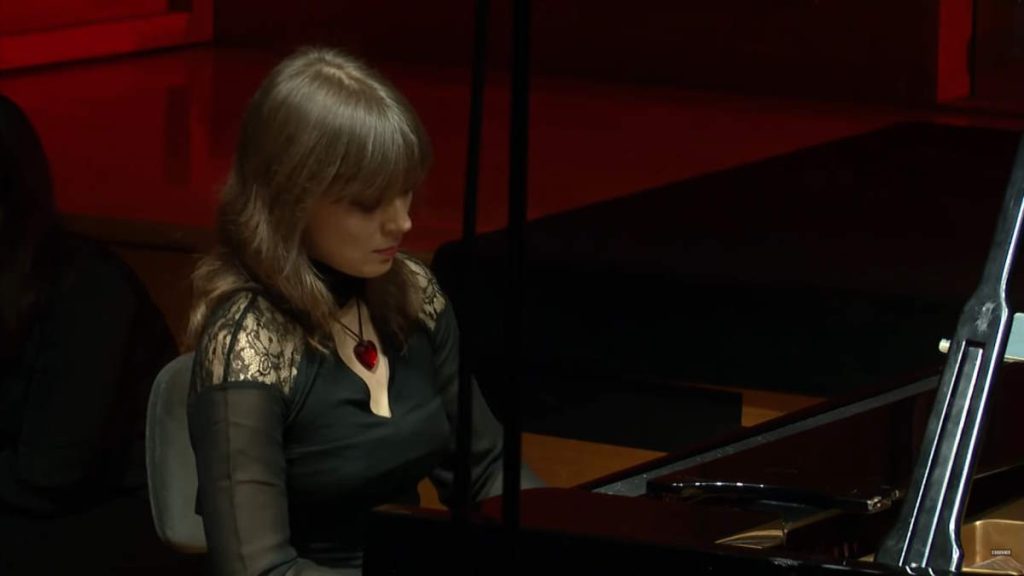Canadian virtuoso pianist and composer Marc-André Hamelin plays Frédéric Chopin’s Waltz in D-flat major, Op. 64, No. 1, sometimes known as “Valse du petit chien” (French for “Waltz of the puppy”), and popularly known in English as the Minute Waltz.
The reason this performance is amazing is because at the end he’s playing the melody with two keys, right next to each other, at the same time. The interval between two keys is called “seconds”. Kind of like thirds or fourths etc. So by playing the melody in intervals of two simultaneously, he’s effectively playing the “Minute Waltz” in seconds.
Frédéric Chopin’s Minute Waltz
Frédéric Chopin’s “Minute Waltz” is one of the composer’s most famous and enduring pieces. Composed in 1847, it is a brilliant showcase of Chopin’s unparalleled skill in transforming the waltz form into a vehicle for virtuosic display as well as deep expression. Despite its nickname, “Minute Waltz” does not imply that the piece should be played in one minute; rather, the term “minute” in this context suggests something small or delicate, reflective of the piece’s lively and intricate nature.
The piece was dedicated to the Countess Delfina Potocka (March 1807 – 2 April 1877), a Polish countess, a friend and muse to Polish expatriate artists Frédéric Chopin and Zygmunt Krasiński. She was noted for her beauty, intellect, and artistic gifts. In her youth, she was a piano student of Chopin.
The Minute Waltz consists of a single movement, which can be described as follows:
- Tempo and Character: Marked “Molto vivace,” the piece is to be played very lively. It is characterized by its bright, joyful melody and requires a high level of technical proficiency to execute its rapid passages and decorative elements accurately.
- Structure: The waltz follows a traditional A-B-A-Coda form, with the opening theme returning after a contrasting middle section. This structure allows Chopin to explore a variety of moods and colors within a compact composition.
- Technical Challenges: The piece is renowned for its technical demands, including swift finger work, light and precise touch, and the need for fluid, graceful motion across the keyboard. The performer must balance these technical requirements with expressive nuance to capture the waltz’s effervescent charm.
- Interpretation: While the piece is often played at a brisk tempo, the goal is not speed for its own sake but rather a spirited yet controlled performance that brings out the elegance and wit of Chopin’s writing. The best interpretations manage to convey both the virtuosity and the poetic subtleties of the piece.
The “Minute Waltz” remains a favorite among pianists and audiences alike, celebrated for its technical brilliance and expressive depth. It encapsulates the essence of Chopin’s musical genius – his ability to craft works of great beauty and virtuosity that speak directly to the human spirit.
Sources
- Minute Waltz on Wikipedia
